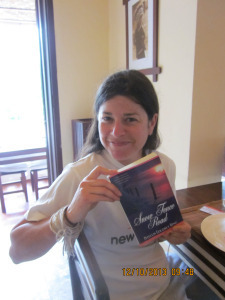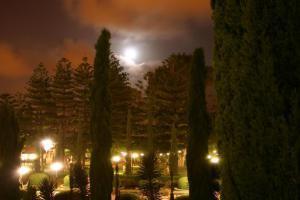Phyllis Edgerly Ring's Blog, page 42
April 9, 2014
Beyond the scaffold of our past
Love gives life to the lifeless.
Love lights a flame in the heart that is cold.
Love brings hope to the hopeless and gladdens the hearts of the sorrowful.
In the world of existence there is indeed no greater power than the power of love.
~ ’Abdu’l-Bahá
“If we want to see changes first of all we need to be in peace inside ourselves, and then we need to be patient with the ones that have not yet arrived in that place of peace.”
~ Grandmother Margaret Behan, Arapahoe-Cheyenne, fifth generation of the Sand Creek Massacre. 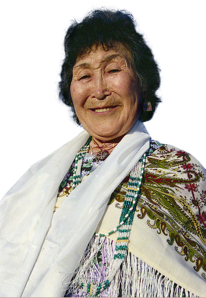
“The past is not a burden; it is a scaffold which brought us to this day. We are free to be who we are—to create our own life out of our past and out of the present.
“We are our ancestors. When we can heal ourselves, we also heal our ancestors, our grandmothers, our grandfathers and our children. When we heal ourselves, we heal Mother Earth.”
~ Grandmother Rita Pitka Blumenstein, Yup’ik mother, grandmother, great grandmother, wife, aunt, sister,friend, tribal elder.
Learn about the love-impelled pathway of peace and healing of The International Council of the 13 Indigenous Grandmothers at:


April 5, 2014
Facets of the infinite jewel

Photo: http://www.etsy.com/shop/DKirkupDesigns
How each of us chooses to show love, receive forgiveness, and express other attributes is our own spiritual fingerprint, and just like our physical fingerprint, it is unique to us.
Nobody in the past, present, or future will love exactly the same way that each of us does.

Photo: http://www.etsy.com/shop/DKirkupDesigns
Each time that we give or receive, an attribute of God – a facet of the infinite jewel – is revealed.
In this way, we make an invaluable contribution because we have added to what can be perceived of divinity.
And because we are all capable of making such a contribution, this means that each individual is absolutely indispensable.
Excerpted from With Thine Own Eyes: Why Imitate the Past When We Can Investigate Reality? from George Ronald Publisher.
Find Kindle version at: http://www.amazon.com/With-Thine-Own-Eyes-Investigate-ebook/dp/B00I1JPC7I/ref=pd_sim_kstore_16?ie=UTF8&refRID=1SHQANAAFWRM932HC41M
Print version: http://www.bahairesources.com/with-thine-own-eyes.html


April 2, 2014
The kind gift of right-timing
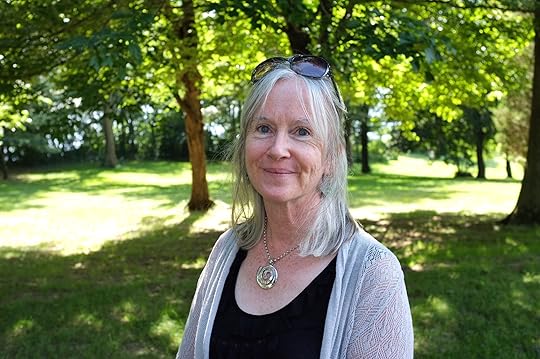 Happy to have a piece up at BoomerCafé this week, as I strike out on the trail of a new novel, while reflecting on what my first one has revealed for me.
Happy to have a piece up at BoomerCafé this week, as I strike out on the trail of a new novel, while reflecting on what my first one has revealed for me.
I had lots of expectations for my first novel when I began writing it in my 30s. Never did I imagine that when it was finally published, my strongest feeling would be, “Thank heaven this didn’t happen sooner.”
This stage of life reinforces that anything of value is not only worth waiting for, but subject to a right-timing factor we can never predict. 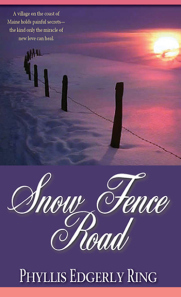
Snow Fence Road looked ready to fly more than 20 years ago when a respected literary agency agreed to represent it. Things seemed on-track for success until life brought changes in the outer world that decided otherwise.
Today, it’s my inner world that appreciates this the most.
Today it’s a different book, in a different world, and I’m a writer with a far different perspective. Two decades ago, this book most likely had a narrow (i.e. months-long) window of time and opportunity to reach readers. Now its possibilities seem as wide as my willingness to follow an ever-unfolding learning curve. Social media and a digital world extend a global reach that astonishes me almost as much as the role readers themselves now play in advancing awareness of and appreciation for the book.
Yes, there are wildly shifting sands in the publishing experience now, but there are horizons I couldn’t have imagined 25 years ago.
READ THE ARTICLE HERE: http://www.boomercafe.com/2014/04/02/boomer-authors-reflections-finishing-book-later-life/#comment-95173
Find more about Snow Fence Road, from Black Publishing, at: http://www.amazon.com/Snow-Fence-Road-Phyllis-Edgerly/dp/1934912549/ref=sr_1_2?ie=UTF8&qid=1372083362&sr=8-2&keywords=Snow+Fence+Road+Phyllis+Ring


March 29, 2014
The aptitude for exile
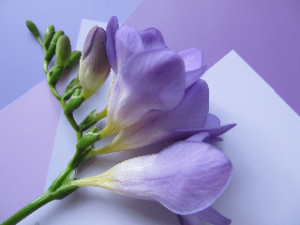
Photo: D. Kirkup Designs
As I prepare for a span of travel in order to nurture more of a book into being, words of poet Jane Hirshfield describe perfectly what I hear echoing in my heart. It remains something of wonderment for me, how such spiritual company unfailingly appears as we make our way along our path:
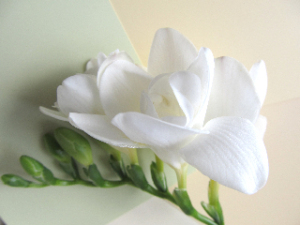
Photo: http://www.etsy.com/shop/DKirkupDesigns“
“Originality requires the aptitude for exile. The physical exile of writers from Po Chu-i to Joseph Brodsky and, in her own way, Dickinson, is the outcome of their willingness to travel first the roads of the independent mind. Such independence may be of ideas, or it may be of style; in the end, the two are the same. As is the result: a solitude that, however difficult, is also held in affection …
“But originality is also a question, a request we make of ourselves and the world. We ask it in the quality of our attention and concentration, and we ask it without expectation of an answer. Such a request, self-raised, self-contained, ripens itself.
To look closely with the attention of questioning changes everything. It is, if undertaken fully, revolutionary.”
Read more from the writer at Zen and the Art of Poetry: An interview with Jane Hirshfield by Ilya Kaminsky and Katherine Towler in Agni magazine: http://www.bu.edu/agni/interviews/online/2006/towler.html


March 26, 2014
Contradiction: pathway beyond confines of ego
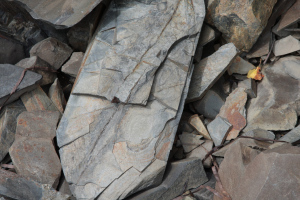
Photo: Saffron Moser
I thank Jeannie Zandi for the following excerpt from Parabola magazine of an interview with Helen M. Luke, a Jungian counselor, writer, and frequent contributor to the magazine.
The interview focused on the power and possibilities of one of the most challenging matters for human nature: embracing contradictions:
Interviewer LORRAINE KISLEY: I wonder if there is a more unnatural act than welcoming contradiction. It seems so difficult.
HELEN M. LUKE: An extremely difficult act. But it is the essential one.
L.K. It’s the last thing one wishes to undergo, the experience of internal contradiction.
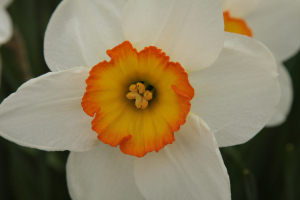
Photo: Saffron Moser
H.L. Unless we live all our lives in the torment of the contradictions, as C.G. Jung insists, then we’re not human. We can’t become whole. If you’re stuck, and you don’t know what to do, stuck between two opposites, and you allow them each to live within you, then a small transformation of the ego takes place. It becomes related to the Self instead of identifying with it.
L.K. It seems that this is perhaps one of the paths toward the almost impossible idea that one could relate to the ego objectively. The bearing of contradiction is a kind of tool which pries apart the identification with the ego.
H.L. Yes, indeed, it is so.
L.K. An indirect method, but it seems to have that effect.
H.L. Jung says–as I’ve quoted already–“God becomes manifest in the human act of reflection.” That is to say, our God images are what we see in our mirrors. Narcissus’ God image was his own ego. But the Zen mirror, which they say must be utterly free of dust, reveals the experience of the whole. That’s the whole point of Zen, isn’t it? All the contradictions–you can’t put it into words at all. It’s a sudden breakthrough.
L.K. They use contradictions as a tool, also.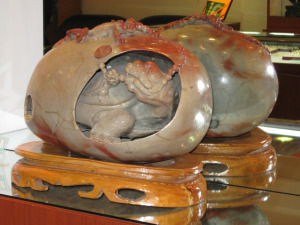
H.L. Very much so. All their koans are contradictions unsolvable by reason. As I was going on to say, you have a conflict, you reflect, you simply bear it, and suddenly you glimpse the truth which unites the opposites; it breaks through. You are then released to act. And then you must not stop. That’s what we get into all the time, isn’t it? We think we’ve had a breakthrough, and now everything is going to be lovely and we’re going to feel good. But on the contrary, you must then start again on the next conflict, quite soon. So that one has to learn to rejoice in the conflict. Which doesn’t mean be happy!
Excerpted from Helen M. Luke in conversation with Lorraine Kisley from “The Only Freedom,” Parabola magazine, Summer, Volume XI, Number 2, “Mirrors,” 1986. Order this issue here › http://bit.ly/1i8PFdU
Learn more about Jeannie Zandi’s work at http://www.jeanniezandi.com/.


March 23, 2014
Where a book tours – all by itself
In the things-I-never-imagined-or saw-coming category:
A kind reader named Tammy Gray from Australia, pictured here, met my New Hampshire friends Jane and Calvin while they were all traveling in Luang Prabang, Laos. That’s how she received her copy of Snow Fence Road.
Tammy tells me that she read it in a day on one of their long, winding bus rides through Laotian mountains. Thanks so much for reading, Tammy – and to Calvin and Jane for bringing it with you half a world away when you already had so much to carry!
I’m also thankful to hear this week from two book clubs whose members are reading the book. I am always happy to “visit” with clubs,
as one has invited, either virtually or in-person, as possible. And I love receiving photos of readers with the book.
Meanwhile, over at Goodreads, more than a thousand folks entered a giveaway for three copies of the book, I was astonished to discover. One of the winners, Sarah, kindly posted a 5-star review.
Other news from Goodreads brings a chuckle: Snow Fence Road has been added to a list there, hopefully the first of more to come. It’s called “Sexy Limp”, in reference to character Evan Marston’s gait. Once again I’m reminded that readers will respond in ways writers couldn’t possibly predict or imagine.
The book is 35th on this list of 109 books, so far. Considering that the story contains no sexual activity, and the limp in question is the unavoidable outcome of unpleasant, life-threatening circumstance, it’s a delightful irony.
Through all of publication’s unexpected developments and surprises, I have a heart full of gratitude for the grace of being able to share with others those nagging things that won’t leave me alone until I help them find their way onto pages.
More about Snow Fence Road at:
http://phyllisedgerlyring.wordpress.com/make-a-beginning-and-all-will-come-right/
Yes, that is grass in the photo to the left. Whatever the snow, we’re going to see it again. Thanks for this shot of summer, Chele Hauschildt.


March 19, 2014
Nourished by the Mystery
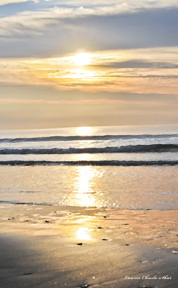
Image: Lauren Chuslo Shur
As the spring equinox nears, a very special time of year comes to an end, for me.
Over these last 19 days, I’ve been more conscious than usual of the sun’s rising and setting, since between those demarcations of the day, I’m pursuing the fast I make each year at this time.
Fasting from “the appetites of the self” has made me more aware, again, of immortal words of Wordsworth’s: “The world is too much with us; late and soon, Getting and spending, we lay waste our powers …”
The hours have also reminded, as author Thomas Moore suggests: “We usually try to explain the mysterious. It would be better to cultivate wonder and reflection.”
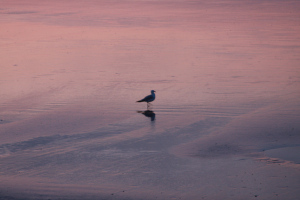
Photo: Nelson Ashberger
It seems easier to feel the truth of this when the day has the added space in it that fasting can provide.
Sometimes, within that space, things can arise that might otherwise stay masked in our busy lives, things that can confuse and baffle.
After several decades of this particular blessing of the Fast, I know what Rumi says is true: “Don’t worry that your life is turning upside down. How do you know that the side you are used to is better than the one to come?” 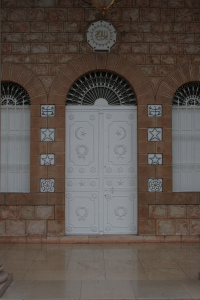
The end of the Fast brings Naw Ruz, literally “New Day”, as spring arrives and along with it, a new year in the Baha’i calendar.
At the threshold of that year, 19 blessed days have also reminded me of what ever-inspirational Flora Whittemore pointed out so wisely:
“The doors we open and close each day decide the lives we live.”


March 16, 2014
Why to live Deeper in the Heart
In a season of fasting, a little feast of reflections from Rumi:
Don’t be sad! Because God sends hope in the most desperate moments. Don’t forget, the heaviest rain comes out of the darkest clouds.
Our greatest strength lies in the gentleness and tenderness of our heart.
As you live Deeper in the Heart, the Mirror gets clearer and cleaner.
Surrender.
Be crumbled, so wild flowers will come up where you are.
You have been stony for too many years.
Try something different –
Surrender.
Not only the thirsty seek the water,
the water as well seeks the thirsty.
I open the window
and ask the moon to come and press its face against mine.
~ Rumi
Photos courtesy Nelson Ashberger.


March 12, 2014
In a season of restraint
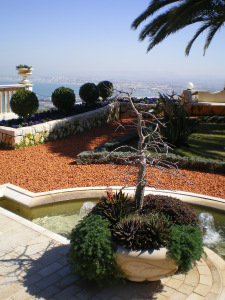 The word “relinquish” has a special attraction for me whenever it appears in prayers and passages of inspiration. In this month of fasting that has become a reprieve, as well as a “season of restraint”, I’m noticing how interrelated both restraint and relinquishment can be.
The word “relinquish” has a special attraction for me whenever it appears in prayers and passages of inspiration. In this month of fasting that has become a reprieve, as well as a “season of restraint”, I’m noticing how interrelated both restraint and relinquishment can be.
Synonyms for the first include words and phrases like “self-control” and “self-discipline”, as well as “moderation”. (As in moderating one’s self toward balance?)
One description for restraint that really appeals to me is “self-possession”. Might that be true possession, of one’s truest self?
Where restraint seems like a condition that arises from my taking responsibility for my self and actions, “relinquish” means to surrender or hand over. This almost makes the two sound like some sort of opposites — or maybe complementary partners.
Surrender and handing over can be very tall orders, of course. But there are two other synonyms that sound like accessible first steps in that process: “let go by” and “let pass”.
What I now hear in the possibility of relinquishment is an invitation to freedom — from the erroneous notions and occasional tyranny of my own thoughts. Not the thoughts I experience when engaged in focused, constructive effort, but the ones that spin round and round, either in the past or in the presumed future. They usually suggest unhelpful things and never, ever, take me anywhere new. Noise, some might call them.
Something well worth restraining or moderating.
How? By choosing what meditators know is an always-available option: letting thoughts go by as they arise, like the clouds, the weather. Not identifying with them, or defining myself by them. Choosing instead to spend my time, and attention, in what inspires and uplifts me — claiming the resources that scattered thoughts so often consume and using them for something better.
In a book called The Seven Valleys, Baha’u'llah wrote, “A servant is drawn unto Me in prayer until I answer him; and when I have answered him, I become the ear wherewith he heareth … “
When I relinquish something lesser for something greater, I seem to catch the sweet notes of that greater kind of hearing. As insistent as my thoughts can be, when I’m willing to relinquish them, what appears in place of them feels positively eternal.
Adapted from Life at First Sight: Finding the Divine in the Details:
March 9, 2014
Two questions, unlimited opportunity

“Iris with Vase”, Laura Moore Watercolours.
The unceasing storms of negativity in the world can easily elicit negative reactions to go with them.
Yet life’s unfolding learning shows me that dwelling on imperfections, or berating myself or others for them, only increases the number of them that I perceive (and the misery I can consequently feel). It also saps — even squanders — the three precious resources over which I have choice: time, energy, and attention. It can lead me to “spending” these on what is counterproductive, even destructive, when divine grace is always inviting me toward the building of the good, instead.
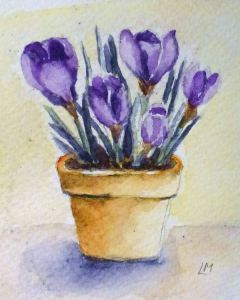
“Crocus”, Laura Moore Watercolours
I can blindly imitate my past experience, including the kind of thinking that was born in earlier, fearful experiences that have led to attitudes, behaviors, assumptions, and beliefs that have no basis in current reality.
Or, I can recognize in my encounter with imperfection an invitation to accept that there is much I don’t know, or can’t change, especially about others. But I can always discover the limitless possibilities of love, of being open to the new possibilities in a situation or a moment.
Might such willingness to meet the present, rather than automatically imitate or recreate the past, be what it most truly means to “occupy” my self?
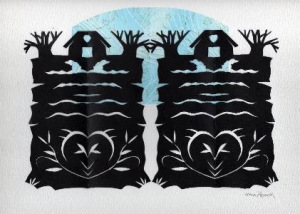
Folk Art House collage by Leona Hosack
The two service questions are conceived as a mechanism to help me focus on and clarify for myself the reality in the decisions with which I am faced each day.
Those junctures of possibility arrive moment by moment, and the goal of this pair of questions is to help me meet each one consciously as a servant of God:
~ At this moment in time, what is the act of service I am capable of giving that the other person is capable of receiving?
~ At this moment in time, what is the act of service I am capable of receiving that the other person is capable of giving?
Every human interaction is either an act of giving or an act of receiving. By asking questions that encompass both giving and receiving, my sensitivity to and awareness of my own needs and those of others is increased daily. Both questions are equally important because giving depends on someone willing and capable of receiving, and receiving depends on someone willing and capable of giving.
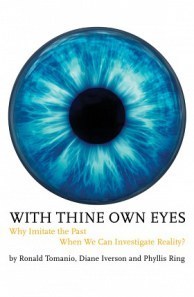 Adapted from With Thine Own Eyes: Why Imitate the Past, When We Can Investigate Reality?
Adapted from With Thine Own Eyes: Why Imitate the Past, When We Can Investigate Reality?
Find the book at: http://www.amazon.com/With-Thine-Own-Eyes-Investigate-ebook/dp/B00I1JPC7I/ref=pd_sim_kstore_11?ie=UTF8&refRID=0TQC490J7FVBRTJWM70H
Also available in print version from the publisher at: http://grbooks.com/george-ronald-publisher-books/spirituality/with-thine-own-eyes-1380638499
My special thanks to artists Laura Moore and Leona Hosack. Find more of their work at: http://www.lauramoorewatercolourart.com/ and http://leonahosack.com/.




